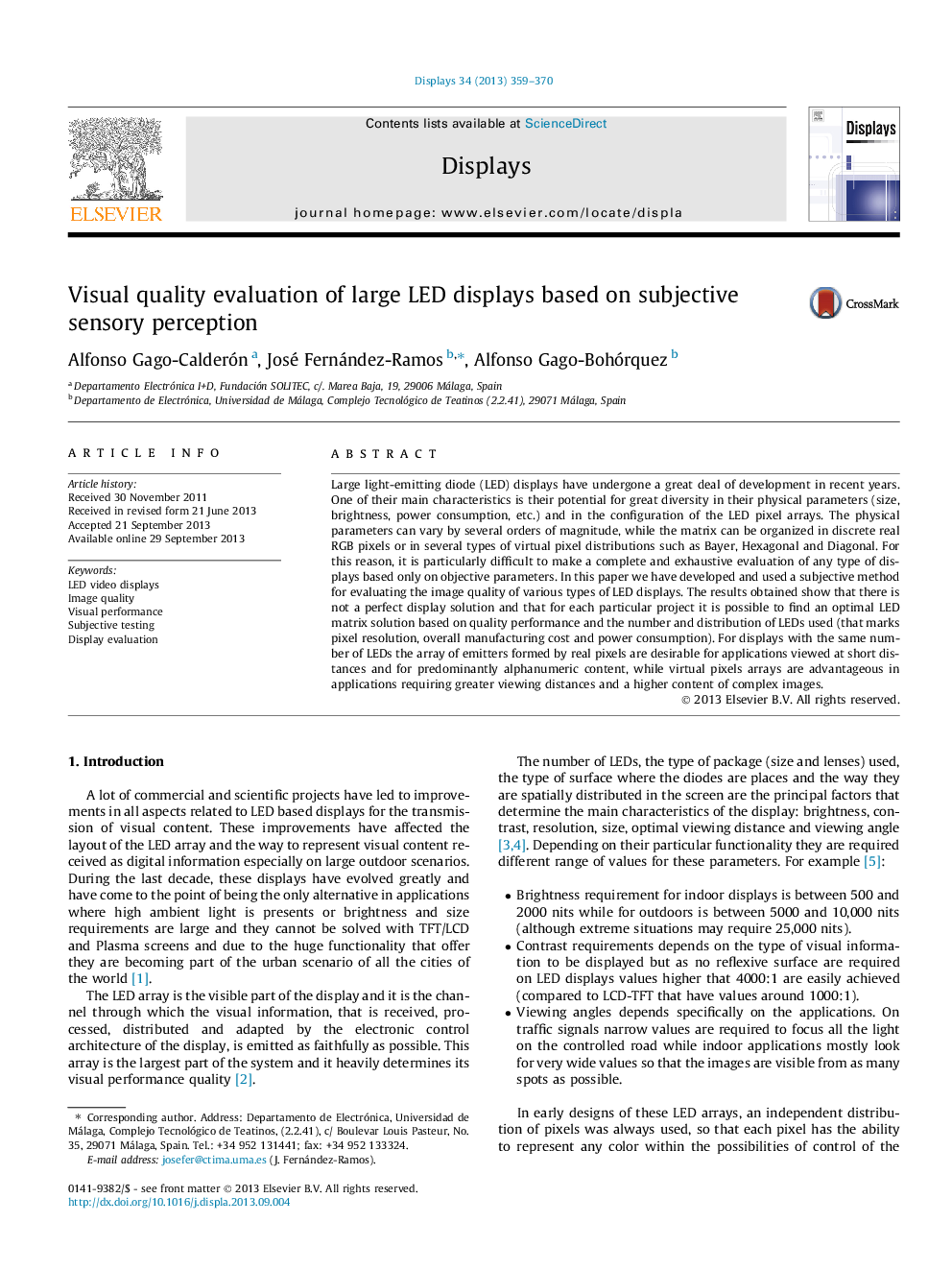| Article ID | Journal | Published Year | Pages | File Type |
|---|---|---|---|---|
| 10363091 | Displays | 2013 | 12 Pages |
Abstract
Large light-emitting diode (LED) displays have undergone a great deal of development in recent years. One of their main characteristics is their potential for great diversity in their physical parameters (size, brightness, power consumption, etc.) and in the configuration of the LED pixel arrays. The physical parameters can vary by several orders of magnitude, while the matrix can be organized in discrete real RGB pixels or in several types of virtual pixel distributions such as Bayer, Hexagonal and Diagonal. For this reason, it is particularly difficult to make a complete and exhaustive evaluation of any type of displays based only on objective parameters. In this paper we have developed and used a subjective method for evaluating the image quality of various types of LED displays. The results obtained show that there is not a perfect display solution and that for each particular project it is possible to find an optimal LED matrix solution based on quality performance and the number and distribution of LEDs used (that marks pixel resolution, overall manufacturing cost and power consumption). For displays with the same number of LEDs the array of emitters formed by real pixels are desirable for applications viewed at short distances and for predominantly alphanumeric content, while virtual pixels arrays are advantageous in applications requiring greater viewing distances and a higher content of complex images.
Related Topics
Physical Sciences and Engineering
Computer Science
Hardware and Architecture
Authors
Alfonso Gago-Calderón, José Fernández-Ramos, Alfonso Gago-Bohórquez,
